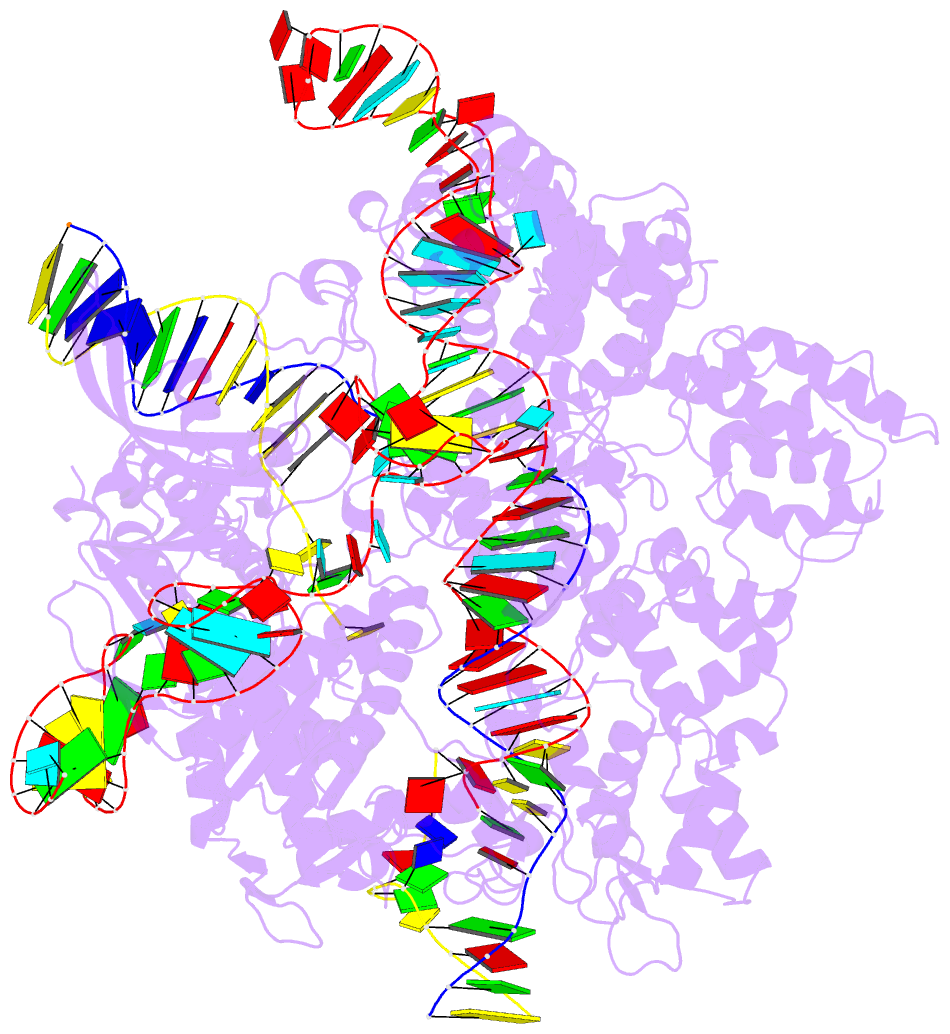Summary information and primary citation
- PDB-id
- 7s4x; SNAP-derived features in text and JSON formats;
DNAproDB
- Class
- immune system-DNA-RNA
- Method
- cryo-EM (2.76 Å)
- Summary
- Cas9:grna in complex with 18-20mm DNA, 1 minute time-point, kinked active conformation
- Reference
- Bravo JPK, Liu MS, Hibshman GN, Dangerfield TL, Jung K, McCool RS, Johnson KA, Taylor DW (2022): "Structural basis for mismatch surveillance by CRISPR-Cas9." Nature, 603, 343-347. doi: 10.1038/s41586-022-04470-1.
- Abstract
- CRISPR-Cas9 as a programmable genome editing tool is hindered by off-target DNA cleavage1-4, and the underlying mechanisms by which Cas9 recognizes mismatches are poorly understood5-7. Although Cas9 variants with greater discrimination against mismatches have been designed8-10, these suffer from substantially reduced rates of on-target DNA cleavage5,11. Here we used kinetics-guided cryo-electron microscopy to determine the structure of Cas9 at different stages of mismatch cleavage. We observed a distinct, linear conformation of the guide RNA-DNA duplex formed in the presence of mismatches, which prevents Cas9 activation. Although the canonical kinked guide RNA-DNA duplex conformation facilitates DNA cleavage, we observe that substrates that contain mismatches distal to the protospacer adjacent motif are stabilized by reorganization of a loop in the RuvC domain. Mutagenesis of mismatch-stabilizing residues reduces off-target DNA cleavage but maintains rapid on-target DNA cleavage. By targeting regions that are exclusively involved in mismatch tolerance, we provide a proof of concept for the design of next-generation high-fidelity Cas9 variants.





